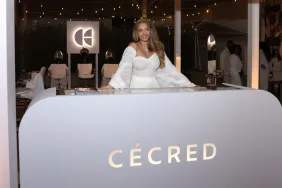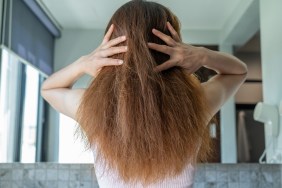
After years of resistance, I joined the ranks of the fake hair army, only to have my fabulous waves turn into a bedraggled mess after less than a month. What was I to do? Ask an expert, then share the information!

This concern has led me to develop my own line of clip-on extensions made of human hair. Along with these extension pieces, I am also preparing to launch my line of shampoos, conditioners, and styling products.
tFS: How do you approach a customer who wants a weave or extensions? Is there a consultation process?
AP: Every potential extension client requires a consultation. During this appointment, I have a detailed conversation, trying to get to the root of why they are looking to have this service.
I try to understand their lifestyle, and determine how much time/energy they can invest into the look.
Texture and color of the weave is also discussed. I am not a one-size-fits-all stylist; each client has different needs and desire different looks.
Extensions are not cheap – they are an investment. Using the right products and tools is so crucial, and if I sense some hesitation on the client’s part, I will try to steer them in alternate direction.

Generally, I recommend 9-10oz of hair, but beyond that, extensions are quite diverse in length, curl pattern, and texture. I have used all types of human hair, but I am partial to Italian wavy – the look is so current and fun.
tFS: How do you maintain the hair and style? How many times a week should the weave/extensions be washed?
AP: As long as you purchase human hair, you can treat your extensions as you would your natural hair. I always recommend washing your hair at least once a week. The belief that black hair does not require frequent shampooing is false! If you have an active workout schedule, I recommend using dry shampoos to soak up the oils on the scalp, but they are not a replacement for a regular washing.
tFS: I once had a weave that turned into dreadlocks after I washed it. How do you cope with hair emergencies such as that one? What would be the worst hair situation that you had to deal with on a client’s head?
AP: Unfortunately, because weaving has become quite popular, so many hair stylists have begun to perform the service without the proper training. I have seen some tragic extensions, with incorrect or too-tight braiding that causes hair to fall out and never grow back.
Along with improper extension application, using bad hair is a major no-no. Synthetic hair gets matted and easily-tangled. All of my new extension clients get detailed instructions when they leave on how to take care of their new look. When you are looking for an extension specialist, make sure you have a consultation and discuss their technique. Proper extensions should make your natural hair grow faster, not make it fall out!

tFS: Do you have any advice for aspiring stylists that want to be the next Amoy Pitters?
AP: There can be only one Amoy! Jokes aside, you have to master your craft. Internships and apprenticeships are a necessity in hair styling, as well as patience. I see so many young people who want to be on the floor cutting within months (sometimes weeks) of graduating. It takes time to really understand hair.
And don’t limit yourself to ONLY black hair or to ONLY extensions. Limitations limit your money! And becoming adept at customer service is a requirement. No matter how great you are at cutting, if you cannot learn the art of customer service, you will not build a clientele.








